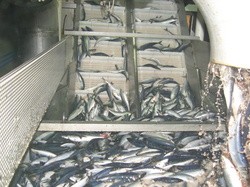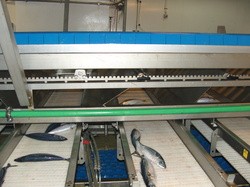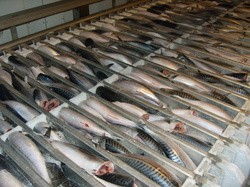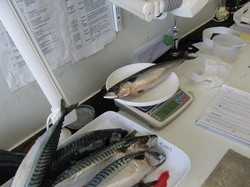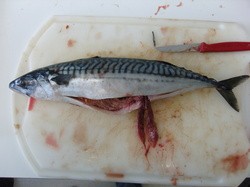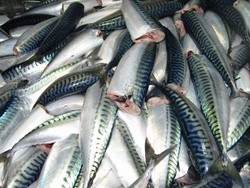Targeted mackerel fishing in Iceland began in 2007, but in 2009 fishing rights for mackerel were first limited.
In 2006, 232 tonnes were caught, but in 2010 the catch had reached 121,000 tonnes. Initially, a large part of the catch was smelted and at the same time the storage technology and processing have been developed in the direction of using the catch for human consumption. Mackerel is caught here by land at the time of year when it is most vulnerable to acute fats. In 2010, about 70% of the catch was frozen.
In March 2011, a final report was published from a project that Matís worked on together with Ísfélag Vestmannaeyjar and Huginn ehf. The report is entitled "Fishing, sorting, processing and markets for mackerel caught by pelagic vessels" and was funded by the AVS Fisheries Research Fund. The report discusses fishing and processing of mackerel, equipment needed for mackerel processing for human consumption, handling of catch, measurements of mackerel caught in Icelandic jurisdiction and the market.
Analytical Services
In the summers of 2008 and 2009, mackerel samples were collected from three pelagic vessels. The samples were measured for shape and weight, the samples were gendered and the fat and water content were measured. The following factors in the shape of mackerel were measured: Total length, standard length, head length, bowl length, starlings, width / diameter, height, circumference, weight and sex.

The total length of the mackerel varied somewhat, the smallest fish were 29 cm and the largest 44 cm. By far the largest was mackerel measuring 35-40 cm or 71% of the samples. The lightest mackerel that came with the samples were between 200 and 300 grams, while the heaviest ones weighed over 700 grams. The vast majority of samples were 300 - 600 grams or 84% of the total, then the relative most samples were 400-500 grams or 33%.
The mackerel was head-cut and slashed, so the head length is important when finding the best setting for the head. Of the samples, 92% were with head lengths of 8 and 9 cm. Most samples were 6.0-6.9 cm in height or 57%. The maximum height of the sample was 7.8 cm.
Most samples were 4.0-4.9 cm wide or 53%. Of the samples, 98% were between 4.0 and 5.9 cm wide. The maximum width of the sample was 6.5 cm. A gender analysis revealed that the majority of the catch was 72% and the proportion of females was 28%. The fat content of the samples was 18 - 31%. The water content of the samples was 53 - 63%. The fat-free dry matter content of the samples was 11 - 23%.
Classification
Processing vessels processing mackerel need to be specially equipped to ensure the correct handling and processing of delicate raw materials. The first step is a classifier that classifies mackerel from herring. Style classifiers have proven to be good, but they have an adjustable distance between the bands and the fish is therefore classified by diameter.
Combs are used to keep Style sorters separate. When only mackerel is processed from herring-mixed catch, mackerel combs are used and herring then immediately falls onto the conveyor belt, but mackerel later falls onto conveyor belts that transport it for processing, although very small mackerel can be classified with the herring. It is possible to process both mackerel and herring at the same time, and then the combos that keep the sorting channels apart need to be changed. Herring then falls onto the leading conveyor belts which transport it on to processing or into storage tanks, while the mackerel falls onto the rear conveyor belts and from there continues on to processing.
Markets
The largest exporters of frozen mackerel, with roe and liver, are Norway and the United Kingdom / Scotland, with a combined turnover of over 60% of the world's export value of mackerel. The largest markets for frozen mackerel are in Japan, Russia, China, Nigeria, Turkey.
When looking at the markets for mackerel caught during the summer, it is clear that the market in Japan is not suitable due to the fat content of the mackerel and the lack of mackerel. The Japanese market is restructuring quality requirements and they have shown great interest in mackerel from Iceland. The mackerel fishing and processing companies have used supercooling on board the vessels and in processing and therefore they have been able to get good mackerel for processing. Different quality requirements for mackerel products are made in the markets. The companies that fish and process mackerel have developed and improved processing methods both on land and at sea to be able to meet the demands of buyers and work their way into new markets. In order to be successful in processing as much of the mackerel as possible for human consumption, there must be good co-operation between producers and buyers on a common understanding of product quality.
